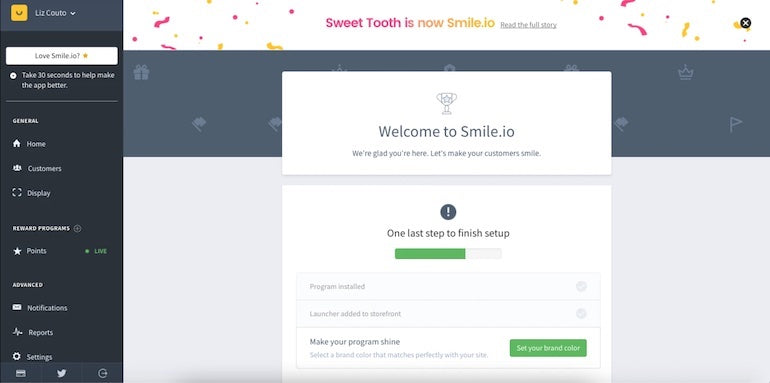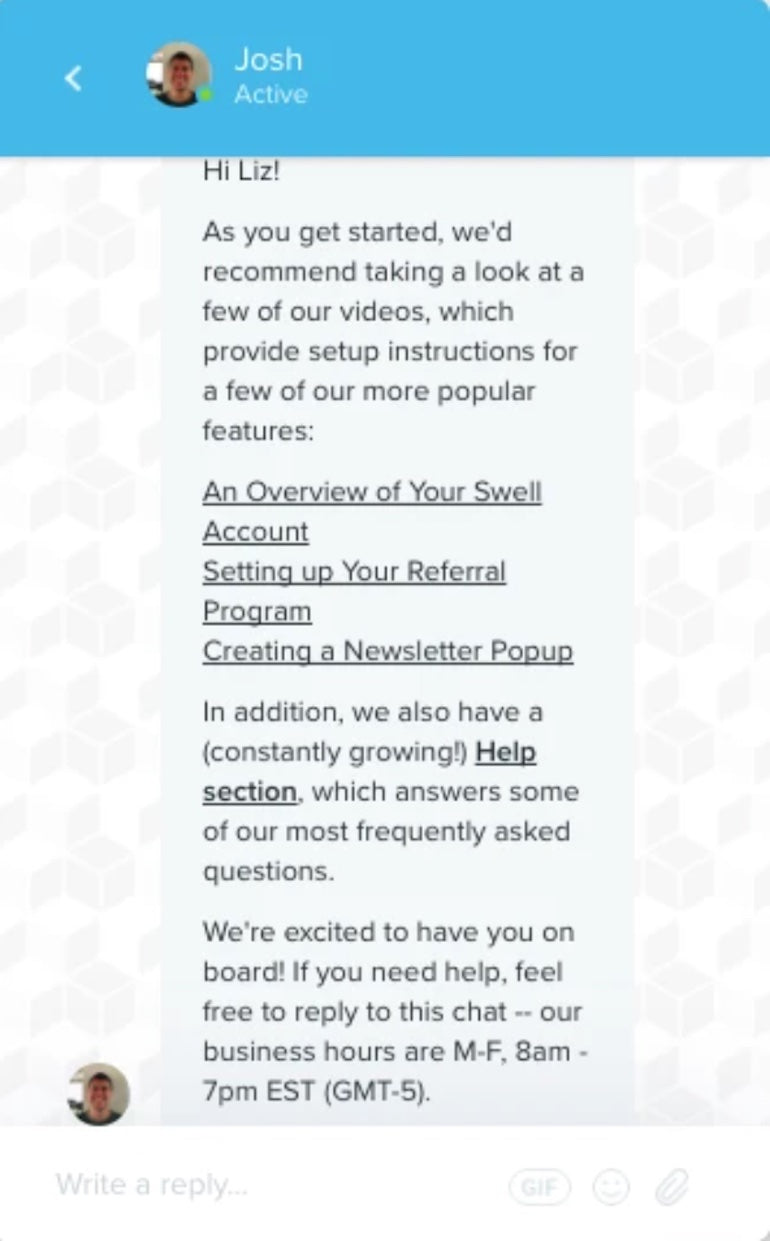Growing an engaged user base for your app isn’t solely about driving new acquisitions. A prospective customer may download your application—a solution you’ve devoted countless hours crafting and refining—and even implement it into their daily business activities. But, if the free trial period expires and they don’t become a paying user, it hurts your bottom line.
Research shows that even a five percent increase in customer retention can grow profits by as much as 95 percent. And, as per 2019 retail app retention rate benchmarks, 51 percent of users will stick with an app one month after downloading it, compared to just 35 percent after three months. Therefore, building and maintaining strong user engagement is paramount to any app’s financial success.
This article will walk you through how to increase active users through user engagement tactics. You’ll also learn app user retention strategies that will help you transform anyone on the fence into loyal brand ambassadors who will maximize your visibility and earning potential.
What is app retention?
App retention is a statistical representation of the number of individuals still using your app after a certain period. App retention is typically represented as a percentage and measured once someone downloads and installs the app on their device. Anyone engaging with your app in some way is deemed an active user.
If you’re looking for a mathematical formula for how to calculate your app retention rate, you can use the following equation:
(# of customers at the end of the measurement period – # of customers acquired during the measurement period) / # of customers at the start of period) x 100
As an example, if your app’s active user base is 200 people at the end of a fiscal quarter, compared to 143 at the start of the quarter, and you acquired 65 new users during that time, your retention rate can be determined like this:
[(200-65) / 143] x 100 = 94.4 percent
Though the average retention rate will vary significantly between industries, devices, and operating systems, a good retention rate for apps is generally considered to be anything above a third of your user base. In other words, 33 percent or higher.
Specific retention metrics for apps may also point towards a specific reason why users dropped off and stopped engaging with a solution. If available, this data must be leveraged to address any tactical gaps and optimize how users convert from the free trial stage to paying customers.
You might also like: How to Get More App Downloads in the Shopify App Store
App engagement strategies and ideas
The secret behind how to increase user engagement on an app starts before they’ve downloaded your solution. Prior to going public, you need to be considering app engagement ideas and taking several measures that will set you up for long-term success in this area.
Determine the correct free trial period
Offering merchants a free trial period can greatly increase app engagement opportunities right off the bat. Hands-on experience often does wonders to ease concerns or clear up questions before committing hard-earned money to a new digital tool. Despite this, there’s no magic number for how to improve app engagement through a free trial.
When our Apps Data Analytics Team took a look at free trial periods and conversion rates, they found that, in most cases, a seven-day trial period yielded the highest number of non-paid users to paid customers or subscribers before the trial’s end. However, for sales apps (i.e., apps geared towards upsells), a 30-day trial period was most beneficial for conversions.
Those two metrics aren’t your only options either. The best free trial period for your app will depend on many factors, from features and overall complexity to the type of merchants it serves. Whatever period length you choose should enable prospective customers to get to know your app and witness the impact it can have on their business.
Solidify your pricing model
As with any product or service, your price point is a deciding factor in the purchasing process. The good news for both developers and users is that app pricing models can be flexible when using the Billing API, meaning they can be built around one or more of the following options:
- One-time charge: This option makes sense for apps performing immediate actions requiring little to no merchant follow-up or maintenance.
- Recurring app charges: This structure appeals to those using apps that provide consistent and continuous servicing or support.
- Usage-based charges: This option refers to apps that, because of incremental merchant actions, result in additional time and labor required by you, the app developer.
With flexible billing setups at your disposal, you can adjust it in a way that you think works best for your clients.
For an example of these options in action, the photo resizing app PixC will resize the first 400 images for free. After that, they give users the option of a usage-based billing model ($0.05 charge per image optimized) or a flat monthly fee ($19.99 per month for unlimited resizing).
By giving users two different models to choose from, they’re empowered to choose the best option for their business.
Sales apps like Product Upsell may go a different route with tiered pricing following a 30-day free trial. Once it expires, users can choose a plan consisting of four different tiers, based on the number of actions created by the app—in this case, the number of views on upsell offers served in the app.
By offering tiers, merchants with different sales volumes and budgets can take advantage of the app, and the developer can make sure that the services provided align with the work they put in.
You might also like: How to Choose the Right Pricing Model for Your App
Lean on recognizable branding
With many apps competing for merchants’ attention in the global marketplace, don’t underestimate the power of being the app they most enjoyed using. In some cases, how to increase app engagement can hinge on positive emotions associated with your app’s look, feel, and overall brand.
Building this level of recognition extends to every part of your app’s design, feature set, and, through the start-to-finish UX, its overall personality. Be sure to consider elements like your app icon, font, color palette, copywriting voice and tone, and customer support options to construct a brand that merchants will love and trust.
You might also like: How to Design a Great App Icon: What You Need to Know
App retention strategies
According to Shopify app analytics, 24 hours after installing an app, 14 percent of active users have already uninstalled it. This stat underscores the importance of showcasing your app’s strengths and growth potential from the jump.
Here are some app user retention strategies that can help you minimize churn and, in so doing, maximize conversions in those crucial first hours after a download.
Give users a clear, enticing call to action
When considering how to increase app retention, the first place to start should be your call to action. By providing a clear, enticing action to complete as soon as the app’s installed, merchants are given one or more opportunities for immediate engagement. As a result, they’ll feel immersed and invested in the app’s trial period.
An app that does a great job of encouraging immediate and straightforward actions is Smile.io. Before users even complete the onboarding process, they’re prompted to set their brand colors within the loyalty app.


In addition to encouraging engagement through action, the onboarding sequence ends by allowing users to click and see the app on their store. This result provides additional visibility into how the app interacts with the merchant’s shop and supports daily tasks.

Create and maintain a personal connection
Regardless of a software’s platform or function, employing a human touch can go a long way. To get merchants to feel more invested in the app and their interactions with its features and interface, leveraging a real person, typically a support or product team member, can help make the overall experience feel more personal.
A solution for this optimization can be as simple as showcasing a human name and face after installation. It creates a warm, personal welcome, like when merchants install SEO Manager, and they’re greeted with a welcome video from the app company’s COO, Rhian Beutler.

As well, including a chatbot pop-up in your admin with a name and face lets merchants know that there’s a person behind the app. For example, when merchants first install the dropshipping app Oberlo, they’re greeted with a chat window from the company’s founder. This process may be automated, but it always gives merchants the sense they’re the center of the conversation.

Provide additional value through resources and tools
Because no two merchants will have the exact needs or come to your app with the same level of technical know-how, it’s essential to provide them with as many support resources as possible. These assets, ranging from print documentation to how-to video tutorials and beyond, must also be easily discoverable after that first download.
For example, SEO Image Optimizer by Booster Apps provides an FAQ link that conveniently opens up within the Shopify Admin. Aside from ease of access, this resource avoids unnecessary context switching by keeping the merchant on-task within the app, leading to a higher degree of understanding and knowledge retention.


Another app that provides help documentation in a clear and convenient format is the rewards app Swell by Yotpo. Following the installation of the app, users are greeted with a chat pop-up from the app’s founder, which directs them to additional resources for learning more about how to use the app.


Swell does a great job of providing visible, instantly accessible guidelines and communication where users can go to get help, and the hours in which merchant’s questions will be answered. Through this transparent, friendly customer success approach, Swell becomes a trusted partner during the merchant’s first few steps with their app. Building this type of relationship early improves the likelihood of merchants seeking further understanding before removing the app.
Boost engagement and optimize app retention
Being an app entrepreneur is hard enough without the added pressure of worrying about high churn numbers and low app retention rates. Having a loyal group of users stick with you not only provides the revenue you’ll need to grow and scale your creation’s capabilities down the road, but it’ll also help generate positive word-of-mouth that reaches like-minded merchants.
If you’re a new app, you may just be focused on getting as many new users as possible, but as our data shows, those first few days with your app will heavily influence whether a user converts from trial to paid. For this reason, retention tactics such as encouraging early actions, making help documents readily available, and user follow-ups, are not to be overlooked.
By focusing on user retention and creating loyal customers, those followers become advocates and essentially do the selling for you.
Read more
- 10 Ways to Improve User Engagement for Your App This Valentine's Day
- Guidelines and Resources for Getting Listed in the Shopify App Store
- 4 Must-Read Shopify Docs to Maximize your Success on the Shopify App Store
- How to Upload Files with the Shopify GraphQL API and React
- How to Use Future Scenario Planning in App Development
- Use the Kit Skills App Extension to Engage Your Users Conversationally
- Shopify API Release: January 2021
- Leveraging the Partner API: Useful Business Tools You Can Build
What have you found to be an effective user retention strategy for your app? Let us know in the comments below!

